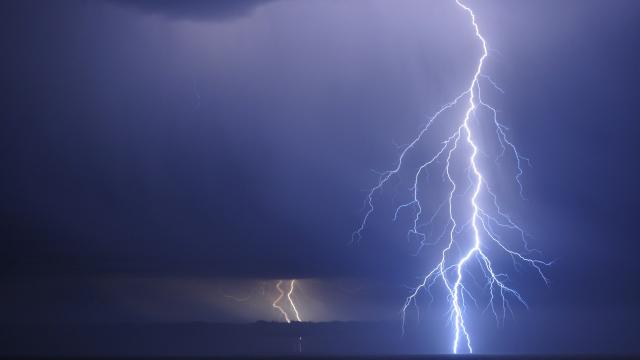Spring is often a joyful season as we transition from the cold of winter into the warmth of summer. But for anyone with asthma or allergies, it’s a nightmare. Spring often causes havoc for those with pollen allergies and hay fever, but it can also cause a condition commonly referred to as thunderstorm asthma.
Here’s what you need to know.
What is thunderstorm asthma?
Thunderstorm asthma is an asthma condition that occurs specifically around springtime thunderstorms.
According to the National Asthma Council, thunderstorm asthma can happen suddenly when there is an abundance of grass pollen in the air and when the weather is hot, dry and stormy.
Spring thunderstorm weather can cause pollen grains to burst into tiny pieces, which the wind then blows around us. When people with pollen allergy breathe in these tiny pieces of pollen, they can go deep inside the lungs and trigger an asthma attack.
In Australia, thunderstorm asthma season typically starts in late September and runs through to the early months of summer.
You may remember that in November 2016, an asthma disaster occurred in Victoria. Thousands of people experienced thunderstorm asthma attacks and required urgent treatment, resulting in overloaded hospitals.
With the Bureau of Meteorology predicting that this spring will see an increase in wet weather in Australia, it’s best to prepare for thunderstorm asthma now.
Who is prone to thunderstorm asthma?
Thunderstorm asthma isn’t limited to people who have been diagnosed or experienced asthma before.
The National Asthma Council says anyone who wheezes or sneezes from hay fever or due to pollens can get thunderstorm asthma, even if they haven’t had asthma before.
The list includes people with asthma whose symptoms get worse during springtime, or those with asthma who are also allergic to grass pollen or get hay fever.
It also includes people who are prone to hay fever and do not necessarily have asthma.
For symptoms of asthma, you can refer to this list.
How to prepare
When it comes to thunderstorm asthma, being prepared is key.
The National Asthma Council recommends you work on a written asthma action plan with your doctor, particularly if you know you’re prone to asthma.
Also, make sure you have enough medication for your asthma in advance and always carry it with you. The same goes for people with hay fever.
Some standard relievers or inhalers can be purchased over the counter at pharmacies, but if you have prescription medication, make sure to get it filled in advance.
It’s also recommended you keep an eye on pollen counts and weather forecasts during spring and summer so you know if a storm is coming. You can monitor pollen counts in Australia here.
If a thunderstorm is occurring, it’s best to try and avoid gusty winds which might whip up pollen during the storm. If you’re at home, make sure to close all doors and windows, and switch your air conditioning to recirculate.
If you have any difficulties breathing, make sure to call an ambulance ASAP.
We’re ramping up for another big storm season so make sure you look after yourselves.

Leave a Reply
You must be logged in to post a comment.